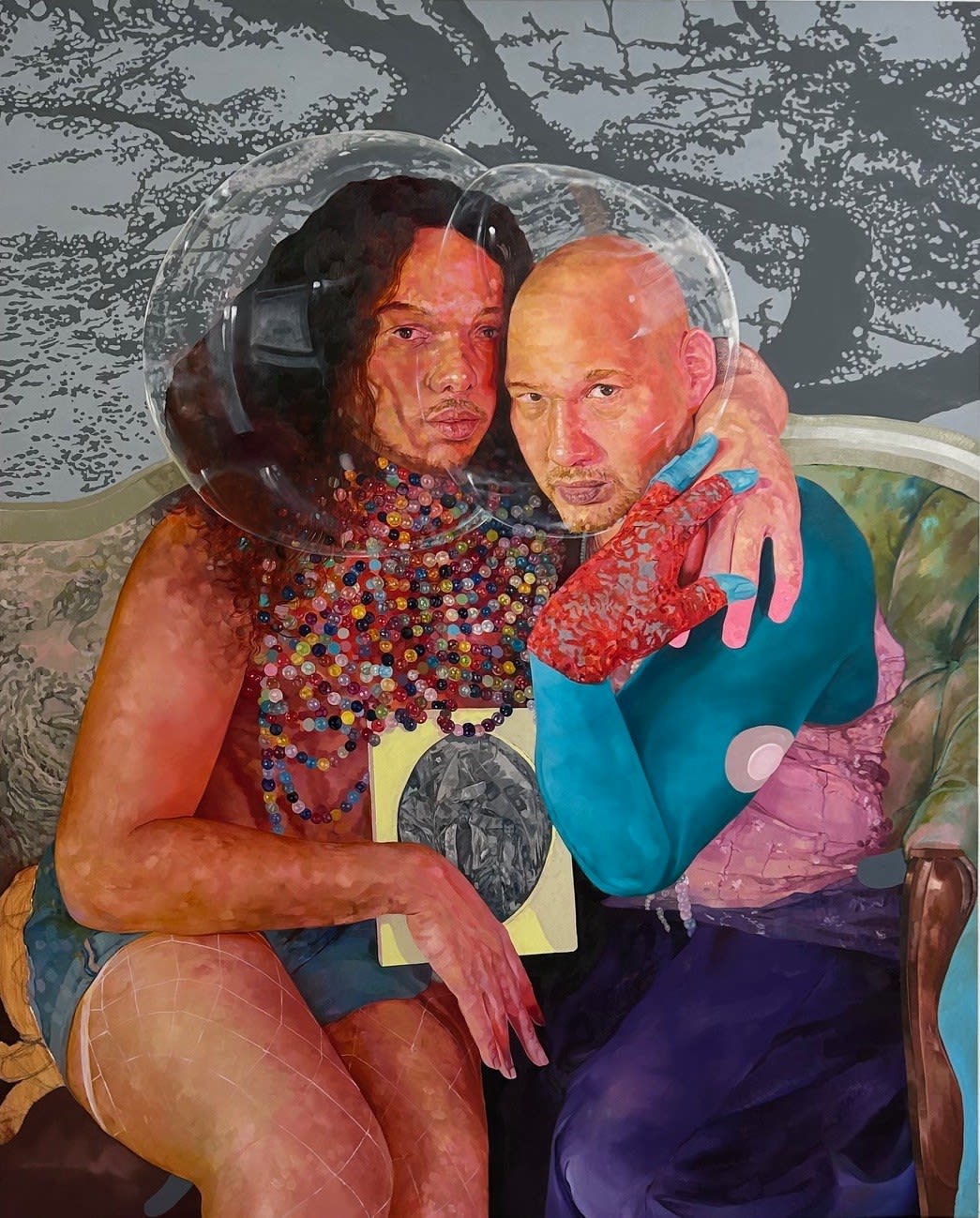David Antonio Cruz
152.4 x 121.9 cm
soyouarebackagain,youarehere,andweareherewithyou is an exploration of queer futurity and the radical possibilities of diasporic Latinx identity. Collapsing past and future, combining space-like helmets and technologically-enhanced protective gear with photographic traces of memory, the painting offers a spirit of play, resilience, and survival.
The two queer Latinx subjects are the artist (right) and Daniel de Jesus (left), a musician, artist, and longtime performance collaborator with Cruz. Reinterpreting classical poses, nestled intimately on a couch, the sitters fold in on each other with draped arms and layered hands, bathed in jewels, wearing helmets that evoke halos and a spirit of cosmic evolution. One sitter holds a picture frame—loosely depicting a child, a life, a moment from the past—that is based on the artist's memory of a photograph of himself as a child posing in front of banana trees in Puerto Rico.
In this utopic vision, the futuristic, adaptive helmets show the capacity to transform and merge into one another, holding space for the sitter's billowing hair and a shared protected space in which the two can breathe. The laced gloves, the limp wrist, and the diabetes patch further serve as gestures of strength and defiance.
With their intense gaze at the viewer, the sitters demand to be seen while powerfully conveying that they see the viewer, too. The tableaus etched onto the upholstery of the left-hand couch pillow—appearing at first as fluid, watery patterns—reveal a Victorian-like image of women dancing, underscoring the painting's spirit of gender fluidity and play.
The painting is part of Cruz's chosenfamily series, which explores the nonbiological bonds formed by Queer people and the idea of family structures chosen out of mutual love and support. Drawing from John Singer Sargent's high society portraits and Francis Bacon's paintings in warped environments, the sitters are invited to pose in opposition to social norms as a form of resistance, play, and queering the act of posing. Each painting depicts the likeness of the artist's community, and at the same time the portraits strive to capture much more than the physical representation of the figures; they venerate the overall structure of queer relationships, captured through intimate moments of touch, strength, support, and celebration.
